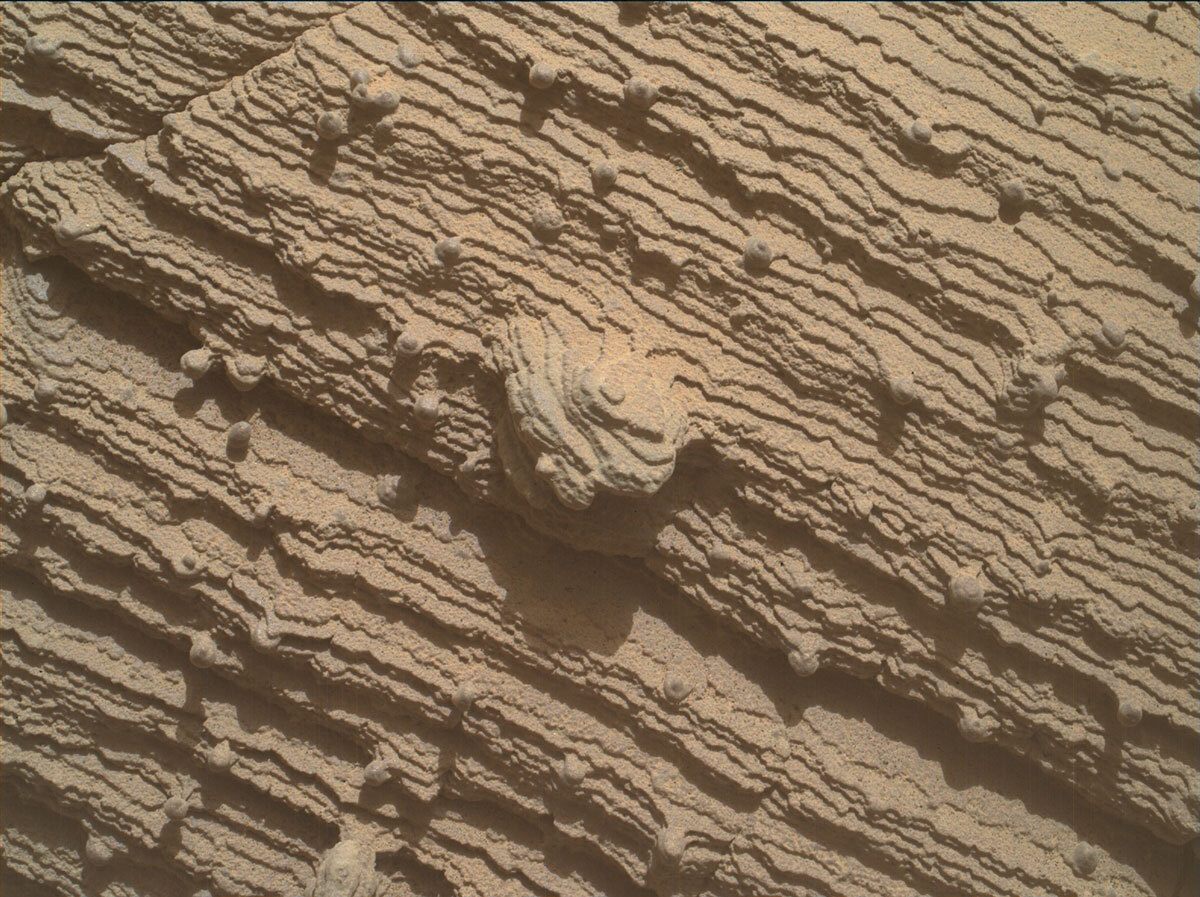2 min read

The science team has been carefully considering where it will collect its next drilled sample. Like taste-testing ice cream flavors before committing to just the right scoop, the science team first uses ChemCam and APXS to assess the composition of the bedrock. We have been analyzing several areas in the “marker band valley,” and this current rock in front of us shows promise as a potential drill target. We’ve imaged this block now with Mastcam and MAHLI (see image above), and used ChemCam to get an initial look at the composition with LIBS. However, because of the tricky terrain and how it affects the rover’s stability, we’ve been unable to brush the surface with our dust removal tool or use APXS to analyze for more compositional data. Finally, after several sols of repositioning ourselves, Curiosity is now ready to unstow its arm, brush aside the pesky dust, and measure the composition with APXS. We’ve chosen the target “Canaima,” named for Canaima National Park in Venezuela which contains spectacular million-year-old, table-top mountains and is a UNESCO World Heritage Site. Though the science team has not yet committed to drilling Canaima, we have decided to be as efficient as possible and today’s plan will include all the scientific and engineering measurements needed so that we’ll be ready to forge ahead with a drill next week, if desired. This will involve a preload test, which will provide a sense of the stability of the rock, as well as the science observations.
The observations thus far of this rock, like the above MAHLI image, are quite lovely. I particularly like how the layering is expressed on this rock. They are so delicately thin with more resistant nodules poking out – in what setting were they deposited and what kind of alteration have they been through since??
In addition to our contact science today, we continue to image landmarks around marker band valley and in our workspace using Mastcam and ChemCam. We also continue with our regular cadence of environmental monitoring measurements, including those that look for changes in dust abundance in our atmosphere.
Looking forward to Curiosity having a productive weekend!
Written by Elena Amador-French, Science Operations Coordinator at NASA's Jet Propulsion Laboratory







